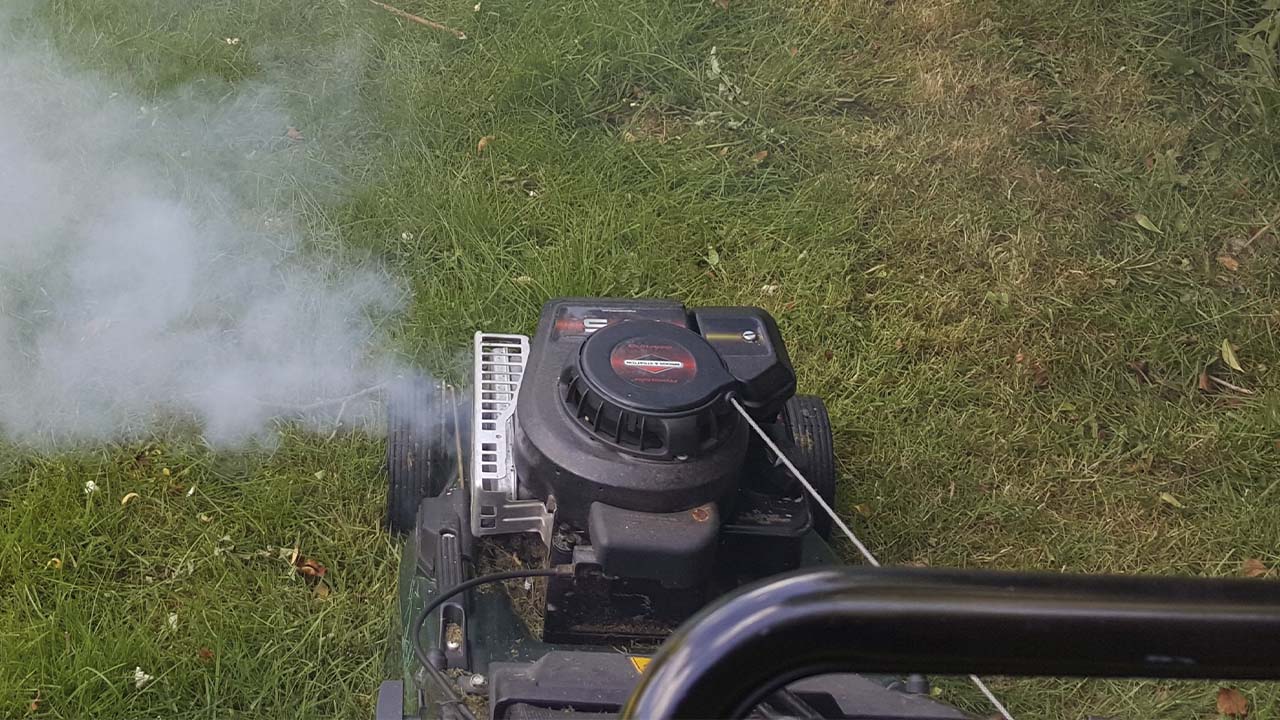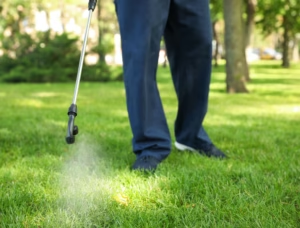Why Is My Lawnmower Smoking? Troubleshoot and Fix Your Mower’s Exhaust Issues
When your reliable lawnmower suddenly starts belching clouds of smoke, it’s not just an inconvenience – it’s a warning sign that something needs immediate attention. Understanding the cause behind your smoking mower can save you from costly repairs and extend your equipment’s lifespan. Whether you’re dealing with white smoke from lawn mower exhaust or your mower blowing black smoke, this guide will help you diagnose the problem and implement the right solution.
Understanding What Different Smoke Colors Mean
The color of the smoke your lawnmower produces provides valuable diagnostic information about what’s going wrong under the hood.
White Smoke From Lawn Mower Exhaust: Oil Burning Issues
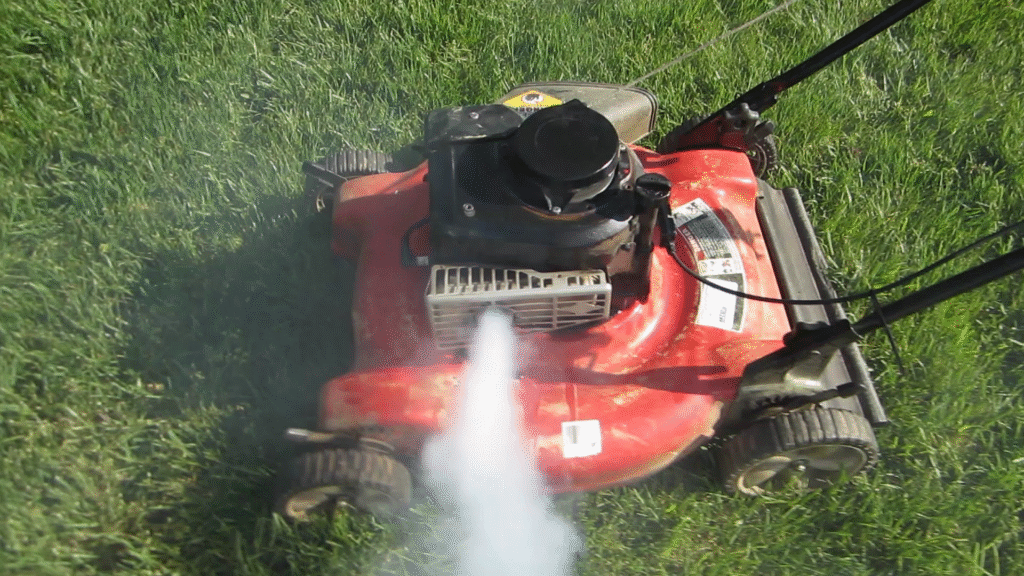
White or bluish-white smoke typically indicates that oil is burning in the combustion chamber. This happens when engine oil somehow makes its way into areas where only fuel should burn. Common causes include:
- Overfilled crankcase: The most straightforward fix – you’ve simply added too much oil during your last service
- Tilted mower position: Tipping your mower incorrectly can cause oil to seep into the combustion chamber or air filter
- Blown head gasket: A more serious issue where the seal between engine components has failed
- Worn cylinder or piston rings: Advanced wear allowing oil to leak past these crucial components
When your lawn mower spewing white smoke first starts, it may produce a larger cloud that gradually diminishes as excess oil burns off. However, if the smoke persists during operation, you’re likely facing a more significant mechanical problem.
Lawn Mower Black Smoke Sputter: Fuel Mixture Problems
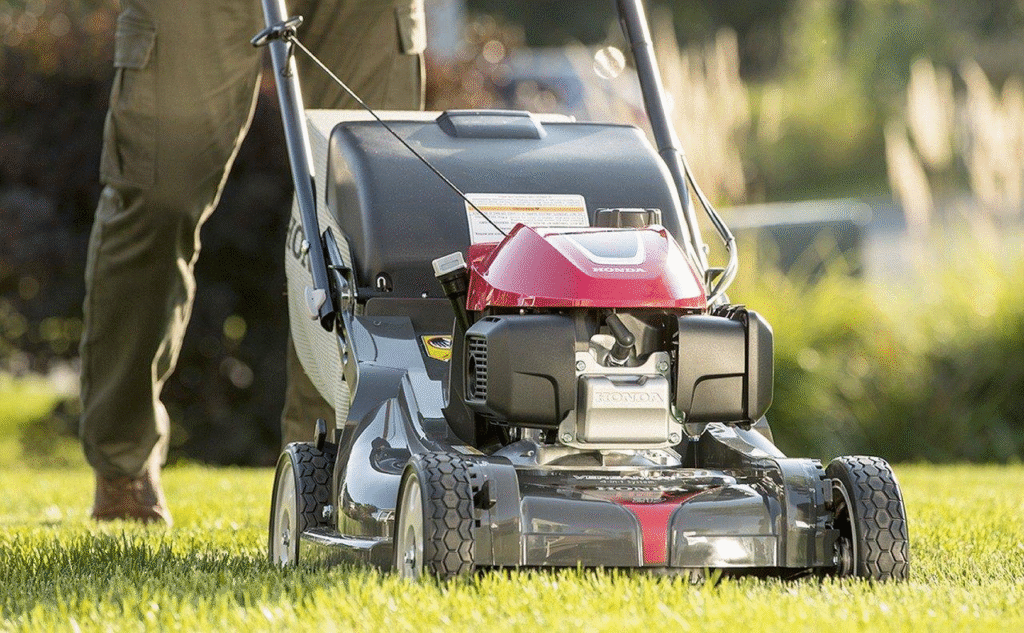
Black smoke indicates incomplete fuel combustion – your engine is getting too much gasoline relative to air. This “rich condition” not only creates smoke but often causes rough running, sputtering, and poor performance. Common causes include:
- Dirty air filter: Restricting airflow and creating an imbalanced fuel mixture
- Clogged or malfunctioning carburetor: Failing to properly meter fuel into the engine
- Choke partially closed: Preventing proper air intake during normal operation
- Fuel quality issues: Old or contaminated gasoline that doesn’t burn efficiently
Gray Smoke: Multiple Possible Issues
Gray smoke exists in a middle ground and could represent either a minor oil burning problem or a fuel mixture that’s only slightly rich. Determining other symptoms (like sputtering, loss of power, or unusual noise) will help identify the specific cause.
Diagnosing and Fixing White Smoke Problems
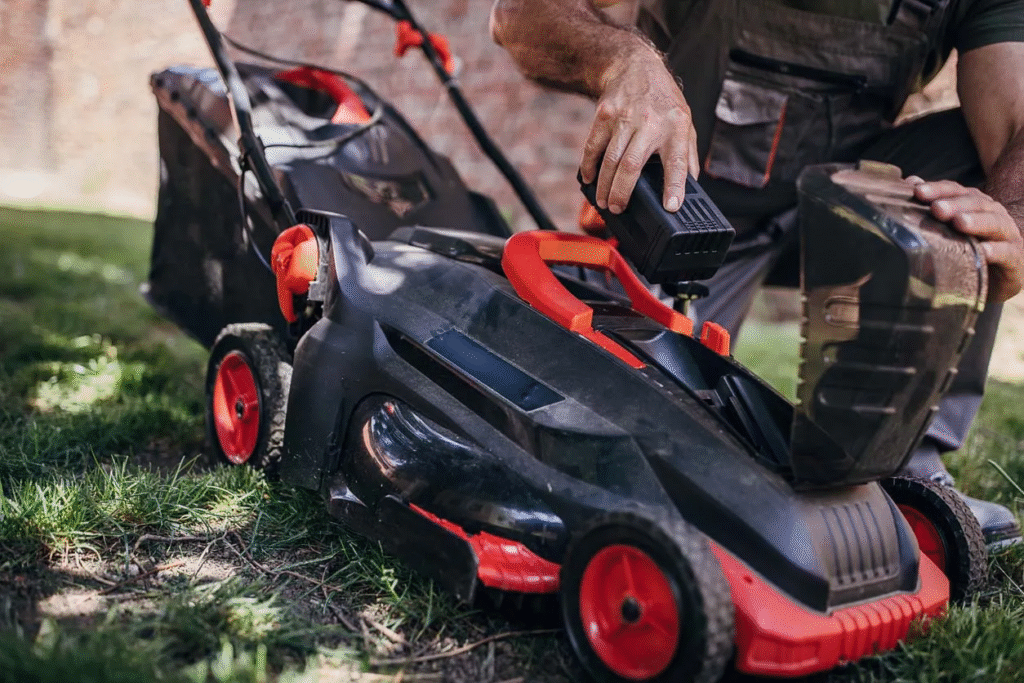
Step 1: Check Oil Level and Condition
Before assuming the worst, verify your oil level isn’t too high:
- Ensure the mower is on level ground and has been off for at least 10 minutes
- Remove the dipstick, wipe it clean, reinsert fully, then check again
- If oil level exceeds the “full” mark, drain the excess using proper disposal methods
Step 2: Inspect for Recent Tipping or Tilting
Many lawn mower smoking issues occur after routine maintenance or when mowing on slopes. If you recently:
- Tilted the mower with the air filter/carburetor side facing downward
- Operated on a steep incline
- Transported the mower improperly
Oil may have seeped where it shouldn’t go. In these cases:
- Check and clean or replace the air filter if oil-soaked
- Allow the mower to run (in a well-ventilated area) until the smoke clears
- Avoid improper tilting in the future – always tip with spark plug facing upward
Step 3: Address Serious Mechanical Issues
If white smoke persists after checking the above, you might be facing:
- Blown head gasket: Identifiable by oil leaks around the cylinder head or through the air filter
- Worn cylinder or rings: Usually accompanied by low compression, difficulty starting, and poor performance
These issues typically require professional repair unless you have advanced mechanical skills and proper tools.
Fixing a Lawn Mower Blowing Black Smoke
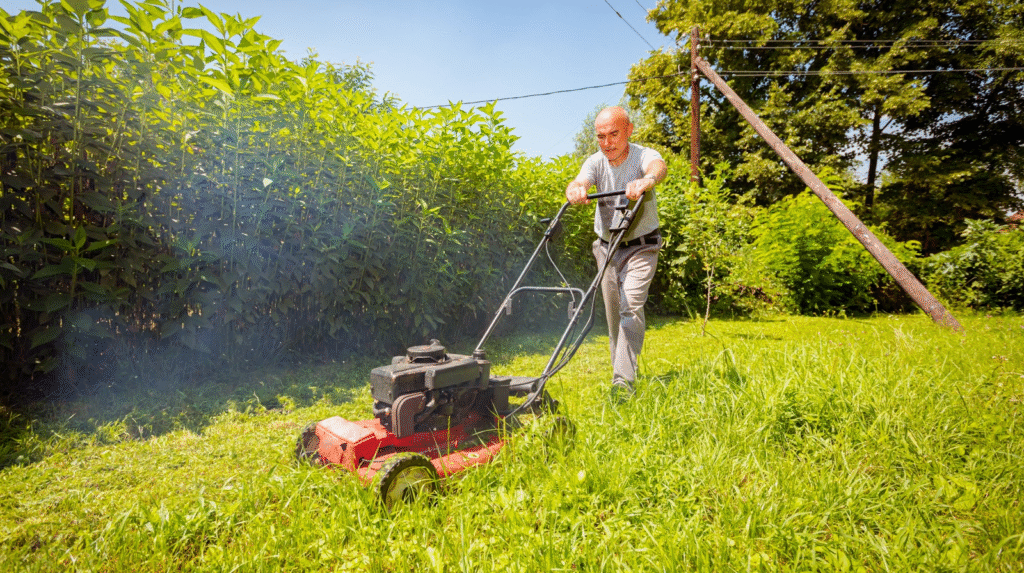
Step 1: Clean or Replace the Air Filter
A clogged air filter is the most common cause of black smoke:
- Locate the air filter housing (typically a plastic or metal case on the side of the engine)
- Remove the cover and inspect the filter
- For paper filters: Replace if dirty
- For foam filters: Wash with warm soapy water, rinse thoroughly, allow to dry completely, then lightly oil if specified by manufacturer
Step 2: Address Carburetor Issues
A dirty or improperly adjusted carburetor often causes mowers to blow black smoke and sputter. You can:
- Clean the carburetor using carburetor cleaner: Spray into air intake with the engine running (follow product directions carefully)
- Perform a more thorough cleaning: Remove the carburetor for disassembly and detailed cleaning (requires moderate mechanical skill)
- Adjust the carburetor: If your model has adjustment screws, consult your owner’s manual for proper settings
Step 3: Check Choke Operation
Ensure the choke opens properly after starting:
- Identify your choke control (could be a separate lever or integrated with throttle)
- Verify it moves freely without sticking
- Confirm the choke plate inside the carburetor opens completely when disengaged
Step 4: Address Fuel Quality Issues
Poor fuel quality can cause black smoke:
- Drain old fuel (anything stored more than 30 days)
- Clean the fuel tank if possible
- Replace with fresh, clean fuel of the recommended octane rating
- Consider adding fuel stabilizer for future storage
Preventative Maintenance to Avoid Smoking Issues
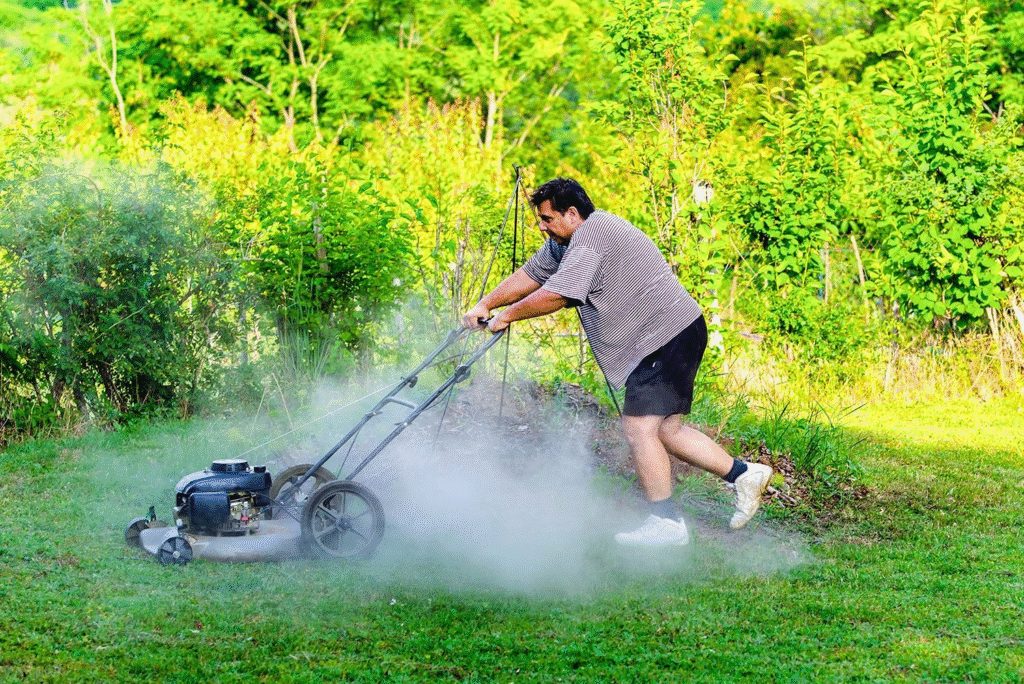
Regular Service Schedule
Prevent smoking problems with consistent maintenance:
- Change oil regularly: Follow manufacturer guidelines (typically every 25-50 operating hours)
- Replace air filters: Clean or replace before they become severely restricted
- Use fresh fuel: Avoid using gasoline older than 30 days
- Clean or replace spark plugs: Annually or after 100 operating hours
- Maintain proper blade balance: Reduces engine stress and vibration
- Keep cooling fins clean: Prevents overheating that can damage gaskets
Proper Storage Techniques
How you store your mower significantly impacts its performance:
- Run the tank empty before long-term storage: Prevents fuel deterioration and varnish buildup
- Store on level ground: Prevents oil migration
- Protect from elements: Cover or store indoors to prevent moisture damage
- Perform pre-season maintenance: Before first use each year
When to Seek Professional Help
While many smoking issues can be addressed with DIY solutions, consider professional service when:
- Smoke persists after trying the solutions above
- You notice oil leaking from gaskets or seals
- The engine exhibits significant loss of power or compression
- You hear knocking or other unusual mechanical noises
- You lack the tools or confidence to perform necessary repairs
Expert Tips for Lawn Mower Longevity
- Use manufacturer-recommended oil grades: Different seasons may require different viscosities
- Consider synthetic oil for high-temperature performance: Especially for commercial-grade equipment
- Keep blade sharp: Reduces strain on the engine
- Avoid mowing wet grass: Prevents clumping and overworking the engine
- Adjust mowing height appropriately: Cutting too low strains the engine
Environmental Considerations
Smoking lawn mowers don’t just indicate mechanical problems – they also increase pollution:
- Repair smoking issues promptly to reduce emissions
- Consider upgrading to a more efficient model if repairs become frequent
- Explore electric alternatives for zero direct emissions
- Always dispose of used oil and filters according to local regulations
By understanding why your lawnmower smokes and addressing problems promptly, you’ll maintain optimal performance, extend equipment life, and reduce environmental impact. Remember that a small investment in preventative maintenance can save significant expense and frustration in the long run.
